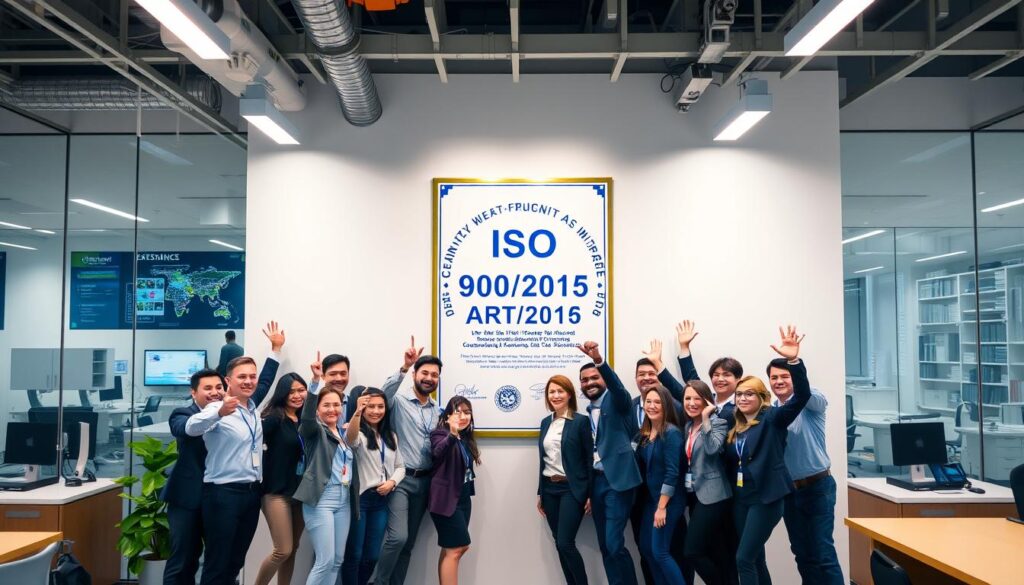Lanka T10 Super League Set for December 2024 Launch
The cricket scene in Sri Lanka is set to get a big boost. This comes with the first-ever Lanka T10 Super League starting December 12 until December 22, 2024. This move aligns with Sri Lanka’s push in the digital space, aiming for significant achievements by 2024 as outlined in its digital economy strategy. This cricket event is part of a broader goal to promote growth across different areas.
Cricket fans are in for a treat with six teams, like the Colombo Strikers and Galle Marvels, facing off. These matches, lasting about 90 minutes each, show off cricket’s quickest form. The excitement builds even more with the Player Draft on November 10, 2024. Teams will be eager to snatch up the best cricket talents.
Key Takeaways
- Sri Lanka’s inaugural Lanka T10 Super League will feature six franchise teams competing in a round-robin format, connecting areas like Colombo, Galle, Jaffna, and others to one thrilling cricket tournament.
- The tournament adheres to a page playoff system and is slated to be held from December 12 to December 22, 2024.
- With matches under lights, the league is slated to make a rapid-paced and captivating spectacle, highlighting both local and international stars in the sport.
- In preparation, the player registration portal gears up to welcome talents on October 15, 2024, promising an eclectic mix of cricketing prowess.
- Reflecting the nation’s digital strategy focus, this cricketing event marks a strategic expansion into sports, enhancing Sri Lanka’s reputation as a hub for technological and recreational excellence.
An Overview of the Lanka T10 Super League
The Lanka T10 Super League starts in December 2024. It’s a key change for sports in Sri Lanka. The first T10 cricket event marks a big step for Sri Lanka Cricket. It’s about bringing the game into today’s world.
The Inception of the Lanka T10 Super League
Sri Lanka Cricket and T10 leaders worldwide teamed up to create the League. It showcases the exciting T10 cricket format. Their goal is to mix top international players with local stars, making a thrilling blend.
Player Registration and International Participation
The signup ends on October 23, 2024. Each team can have seven players from other countries. This gives the League an international flavor. It also shines a spotlight on Sri Lanka as a top cricket place.
Franchise Cricket: A New Era in Sri Lanka
Franchise teams represent Sri Lanka’s cricket areas. They pick their players from pros and new talent. The draft happens on November 10, 2024, in Colombo. This marks a new chapter for the sport in the country. It aims to keep cricket thriving in Sri Lanka.
Sri Lanka to Host Inaugural Lanka T10 Super League in December 2024
In December 2024, Colombo will host the first Lanka T10 Super League. This new event is a partnership with T Ten Global Sports. It will run from December 12 to 22, offering 10 days of intense cricket action. The league is a chance to match player dreams with fan wishes for quick, exciting games.
Everyone is looking forward to the Lanka T10 Super League in December 2024. This event is expected to bring a fresh vibe to cricket. It will highlight emerging talents and offer a new way to enjoy cricket. Colombo’s modern venues are set to make the city a cricket focal point.
- Participating Teams and Format: Six teams will compete, with 15 to 17 players on each team.
- Player Draft Details: The draft is on November 10, 2024. Teams can sign up to six players, including stars from Sri Lanka and abroad.
- Draft Dynamics: The draft will use draws and randomizers to ensure teams are evenly matched.
- Venues: Cities like Galle, Kandy, Jaffna, and others will host matches. They offer great facilities and add to the sport’s heritage in Sri Lanka.
The excitement for the Lanka T10 Super League is huge in Sri Lanka. This isn’t just about showing off cricket skills. It’s a celebration of cricket’s growth. The games are short and fast, attracting more fans. The preparations are solid, promising a landmark event for Sri Lanka’s cricket.
Player Draft and Team Strategies for T10 Cricket
The Lanka T10 Super League is starting strong in franchise cricket. It’s all happening in Colombo on November 10, 2024, during the Player Draft. This new competition is serious about diversity. Each team needs to pick six essential players from different levels of cricket.
The six teams, Colombo Strikers, Galle Marvels, Jaffna Titans, Kandy Bolts, Hambantota Bangla Tigers, and Negombo Braves, face a big challenge. They will go through an 11-round draft. The goal is to pick players wisely. Prices vary from USD 35,000 for the top players to USD 2,500 for new talents from Sri Lanka, Zimbabwe, and the West Indies.
Teams need to build a group that can handle the T10 format’s quick pace. This game squeezes cricket into 90 minutes of intense action. So, finding players who are quick, skilled, and can adapt is key. The mix of experienced international players and fresh new faces adds excitement to the draft.
The draft’s results will set the stage for the December tournament. OMP Sri Lanka is ready to cover every detail of the event. They promise thorough reporting, sharp analysis, and total accuracy. OMP Sri Lanka is dedicated to keeping everyone updated about the Lanka T10 Super League. They support the growth of Sri Lankan cricket through smart team choices and the thrilling world of franchise cricket.

